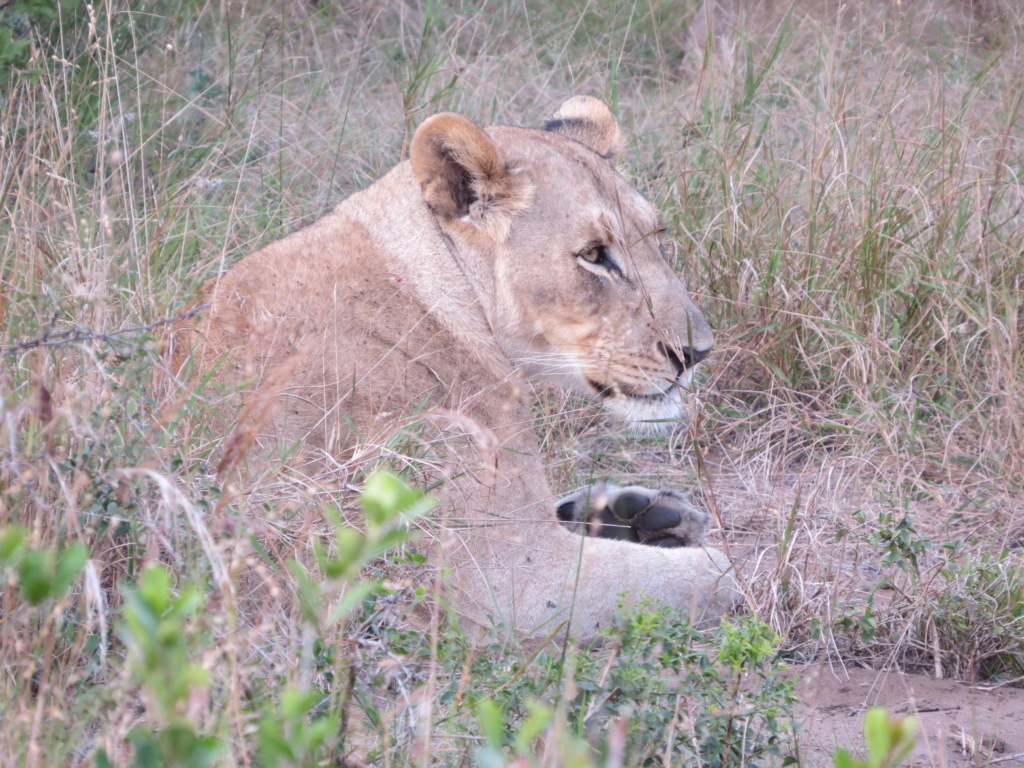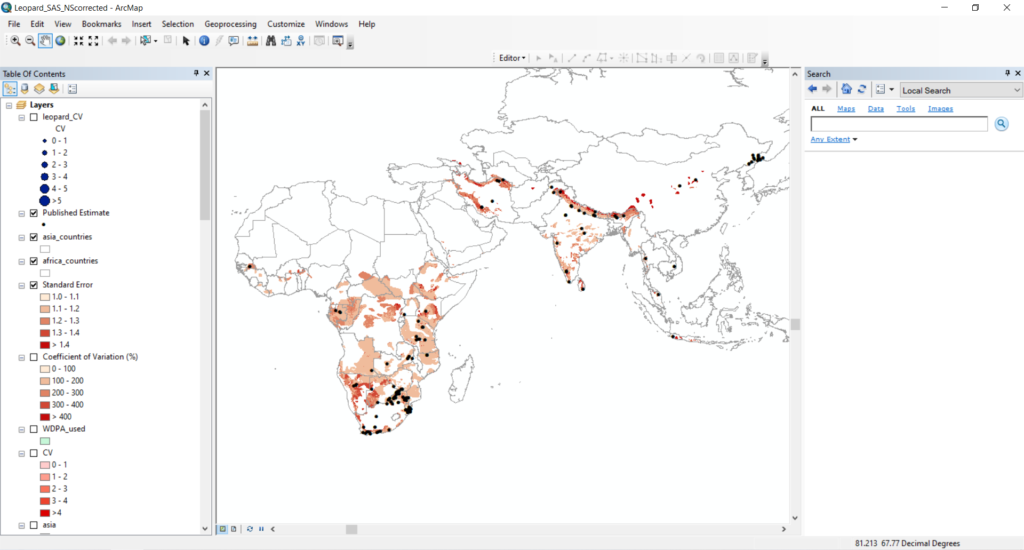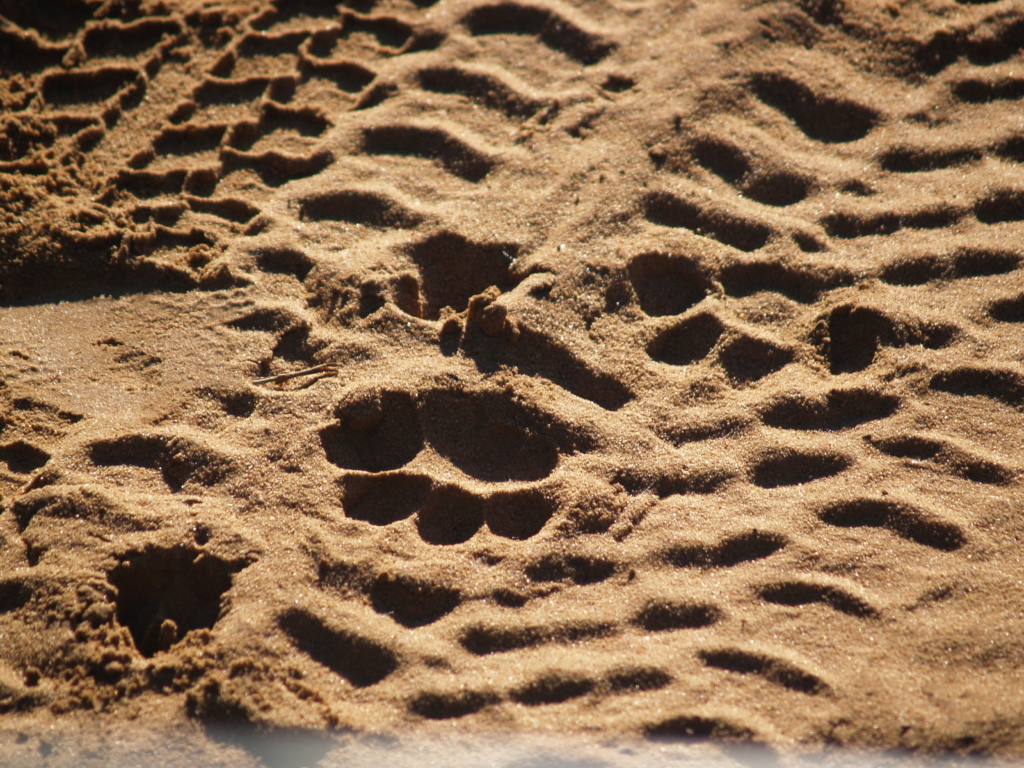
My thesis research for my Master’s degree entailed two chapters, the two abstracts of which are attached below in addition to the abstract for the entire thesis as a whole. Because I started my MS during the COVID-19 pandemic, I chose to use existing data from the scientific literature for my research. In short, I assessed how the magnitude of livestock depredation by carnivores varies based on the spatiotemporal scale of data collection (chapter 1), and used variables at predictive scales to model leopard density and determine how many leopards the world could potentially hold (chapter 2). My advisor was Dr. Jacqueline Frair from SUNY College of Environmental Science and Forestry. I successfully defended in April 2023, and received the Outstanding MS award from my department (Environmental Biology) for my work. The complete thesis is available under the university library’s digital repository, and links to the published articles from my two chapters will be posted here once available.

A Global Assessment of Scaling Relationships for Carnivore-Human Conflict and Leopard (Panthera pardus) Density
Thesis Abstract: Synthesizing information across disparate studies remains challenging in part due to scaling issues, a concept requiring greater consideration with respect to observations of human-carnivore conflict and range-wide predictions of species status. I used published records to examine: 1) spatiotemporal scaling in livestock depredation metrics, and 2) global drivers of potential leopard (Panthera pardus) abundance. Generally, the apparent magnitude of livestock depredation increased with spatial and temporal extent, whereas predicted leopard density decreased with spatial extent. Temperature, primary productivity, and human impacts, measured over 1- to 20-km2 spatial extents, explained 38% of the observed variation in leopard density globally after accounting for study design effects. This work provides the first spatially explicit map of potential leopard abundance from southern Africa to far-eastern Russia, sheds light on scaling relationships for carnivore conflict metrics, and discusses additional work needed to provide the most reliable information to guide conservation actions for large carnivores worldwide.
Key Words: carnivore-human conflict, density, leopard, livestock depredation, scale

Chapter 1: Scaling Issues in the Study of Livestock Depredation by Carnivores
The magnitude and socioecological drivers of livestock depredation by large carnivores have been well-studied across the world. However, very few studies have assessed how observations of depredation might vary with spatiotemporal scale. Uncovering scaling relationships may allow for more accurate aggregation of observations collected at fine spatial scales, and across diverse temporal extents and resolutions, to better inform development of effective policies and management actions. Herein, I extracted data from published studies to derive conflict metrics (number of animals killed, number of attack incidents, and percent annual loss) and the spatiotemporal extent and resolution of the study. Regressions indicated positive relationships between outright numbers of attacks or animals killed and spatial and temporal extent, with a negative relationship observed for percent annual loss of stock and increasing extent. Scaling variables also interacted with other key factors known to influence human-carnivore conflict across the diverse socioecological systems reported. Data on resolution (space or time) were too sparse to draw conclusions. In fact, reporting on the spatiotemporal dimensions of a study was generally lacking. To better elucidate and control for scaling issues going forward, authors should take care to better report the spatiotemporal dimensions of their observations. With an enhanced understanding of scaling relationships in human-carnivore conflict metrics, future work may better elucidate and manage important drivers of conflict.
Note: I was able to give one poster (2021) and two oral (2022) presentations on this part of my thesis at conferences, specifically The Wildlife Society and American Society of Mammalogists annual meetings.

Chapter 2: Spatially Explicit Estimates of Global Population Potential for Leopard (Panthera pardus)
Although many studies have assessed local densities of threatened carnivore species, few have synthesized existing data into range-wide estimates based on habitat potential. Identifying where observed densities differ greatly from potential carrying capacity may better focus conservation attention. Herein, I related published leopard density estimates (N=136) to hypothesized drivers (e.g., gross primary productivity, human density) to produce a spatially explicit estimate of potential density throughout their geographic range spanning far-eastern Russia to southern Africa. I used AIC to identify the top model from 19 candidates that included anthropogenic and environmental drivers, alternative scales of analysis, linear and non-linear effects, and study design effects. Leopard density was negatively associated with human density and cropland and urban landscapes relative to open forest. By contrast, leopard density was positively related to temperature and primary productivity. The model explained 38% of variation in leopard density and estimated a potential for 355,000 leopards across their range. Although prediction certainty appeared greatest in areas predicted to house the most leopard, e.g., equatorial Africa and northern India, some of these areas also coincided with known low leopard numbers (due to human persecution) that I was unable to account for. Fine-scale variables and historical legacies of armed conflict that have depleted biodiversity need to be considered when evaluating contemporary leopard status, but my models may indicate population potential and where conservation action may prove most rewarding.